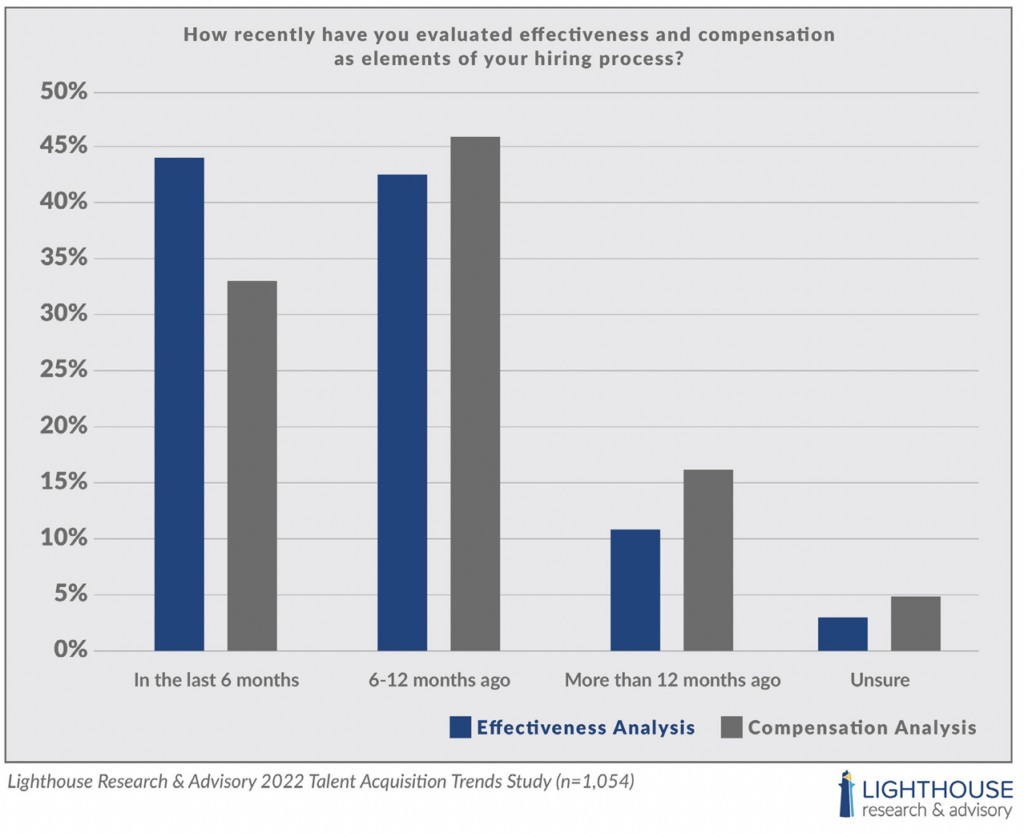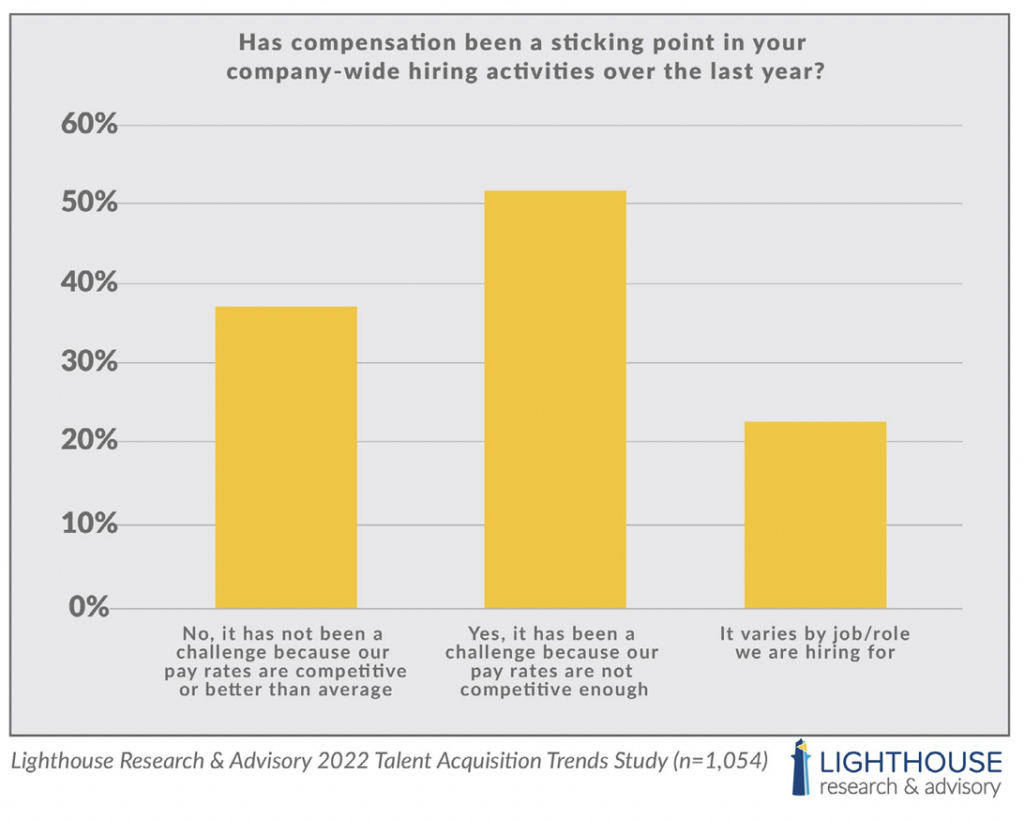How to Measure Recruitment & Hiring Effectiveness
Monitor key metrics, like quality of hire and compensation, to zero in what’s impacting your talent acquisition performance.
There’s more to measuring effectiveness than occasionally reporting static hiring & recruitment numbers. Analyzing your recruiting data creates a dynamic feedback loop that helps your organization evaluate the health of your hiring activities.
Knowing what to measure and how can drive better candidate experiences, increase quality of hire and lead to greater hiring manager satisfaction. It can feel like a lot to take on — as a team or an organization.
But starting with a few key elements that matter to your organization can make your growth as a data-driven recruiting operation more manageable and sustainable.
Measuring your hiring process requires rigor, discipline and structure
You know the saying — excellence is not an act, but a habit. So, if we want to excellent at something, we have to do it repeatedly. That goes as much in life as it does in your candidate experience and hiring process. And in your total talent acquisition function, the area that demands a high level of rigor and discipline is measurement.
In a recent study, LHRA found three barriers to talent acquisition measurement — low measurement maturity, lack of strategic focus and manual process.
How can your team improve its measurement practice? Building structure around how you measure, report and refine your approach (based on those findings) will help you develop a better measurement “habit.” Here’s some direction on where to start.
How and where to start improving measurement in recruiting
Think about your own organization: how frequently does your team audit, review data and test the effectiveness of your hiring process? When was the last time you did a compensation analysis?
In a recent LHRA study, most talent leaders said they looked at their effectiveness and compensation within the last 6-12 months. But is that enough?
You’ve got a lot on your plate. That time can go by fast. But things can change even faster. Pay scales move. The industry evolves — and candidate needs do too.
Chart: Measuring hiring process effectiveness

8 out of 10 talent leaders say hiring process effectiveness is a top business priority
If 80% of talent leaders say effectiveness is a top business priority, continuous monitoring and evaluation of your hiring process should become a priority, too.
Evaluating your entire hiring process and compensation can be a heavy lift. But what if, instead of a comprehensive annual audit, you looked at key metrics, daily or weekly, and took what you learned and applied it to making your hiring process incrementally more effective? It feels more doable. Let’s break it down a little more.
One clear way to examine hiring process effectiveness is through the lens of talent acquisition metrics. In a recent survey, talent leaders said they are using common hiring metrics, including cost per hire, time to fill and quality of hire.
Yet when asked what metrics were most useful for measuring hiring process effectiveness — quality of hire jumped to nearly 2x more significant than time to fill and 75% higher than cost per hire.
Quality of hire is a key metric for effectiveness — but measurement extends beyond the first day
Proactive, strategic talent acquisition functions use quality of hire as a measurement 30% more often than passive talent functions. They’re also 50% more like to say quality of hire is the most useful metric for demonstrating value of recruiting in the business.
At a practice level, hiring quality comes down to a few critical factors that must be measured beyond the hiring date: Does the person have the skills to do the job? Are the able to do the job well? Do they stay in the job for a reasonable amount of time?
Job performance, tenure and retention are part of this equation too. If the employee can’t do the job well or they leave in a few weeks, these factors need to be reflected in your quality of hire and impact how you measure the effectiveness of your hiring process.
Questions to evaluate your hiring quality and how it impacts your effectiveness:
- What do our hiring quality metrics tell us about our candidate selection process?
- What talent sources are most effective for attracting high-quality candidates who perform well on the job?
- What sources are most effective for attracting talent with strong tenure and lower churn?
- Are new-hires able to function adequately in their new jobs?
- Have we seen specific skill gaps in new-hires that need to be filled?
Why compensation is a factor in your hiring process effectiveness
According to LHRA, the number two reason people quit their jobs is to seek higher pay.
It should be noted: compensation matters more to some workers than career growth, relationships and benefits. In fact, 75% of employers say compensation is a real issue when it comes to hiring activities.
Questions to evaluate compensation as part of your hiring process
To evaluate how your pay scales and offers are impacting your hiring process, look over your data the past 6 months and ask your team these questions:
Chart: Impact of Compensation Hiring Process

- How many of our offers were rejected because of compensation — or even the perception of being underpaid?
- What data are we collecting on competitive offers?
- Can we use competitive data as a talking point with our HR (or compensation) team to modernize our rates?
- How many of our offers are going unanswered or get rejected because the candidate has accepted a competing offer?
- What opportunities do we have to speed up our time-to-offer? What is currently slowing it down?
- What is the cost to the business of unfilled roles — by day, week or month?
- Looking at the cost of unfilled roles: how can this data help us re-prioritize and focus on what’s most important for the business?
Improve your recruiting effectiveness — early and often
Just like practicing excellence, improving your effectiveness isn’t a “one and done” activity. To be successful — and continuously improve — you should monitor your key metrics regularly, establish how your team uses that data and determine who’s responsible for implementing feedback on each part of your hiring process.
By continuously looping feedback through your team and into your hiring process, you’ll generate more conversions, stronger hires and better results for your business overall. If you’re ready to drive your recruitment improvement plan: check out our Recruitment Scorecard to measure performance across your talent acquisition function and identify ways to grow.
